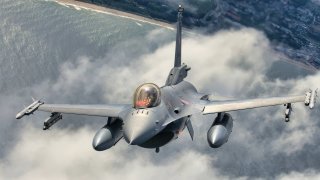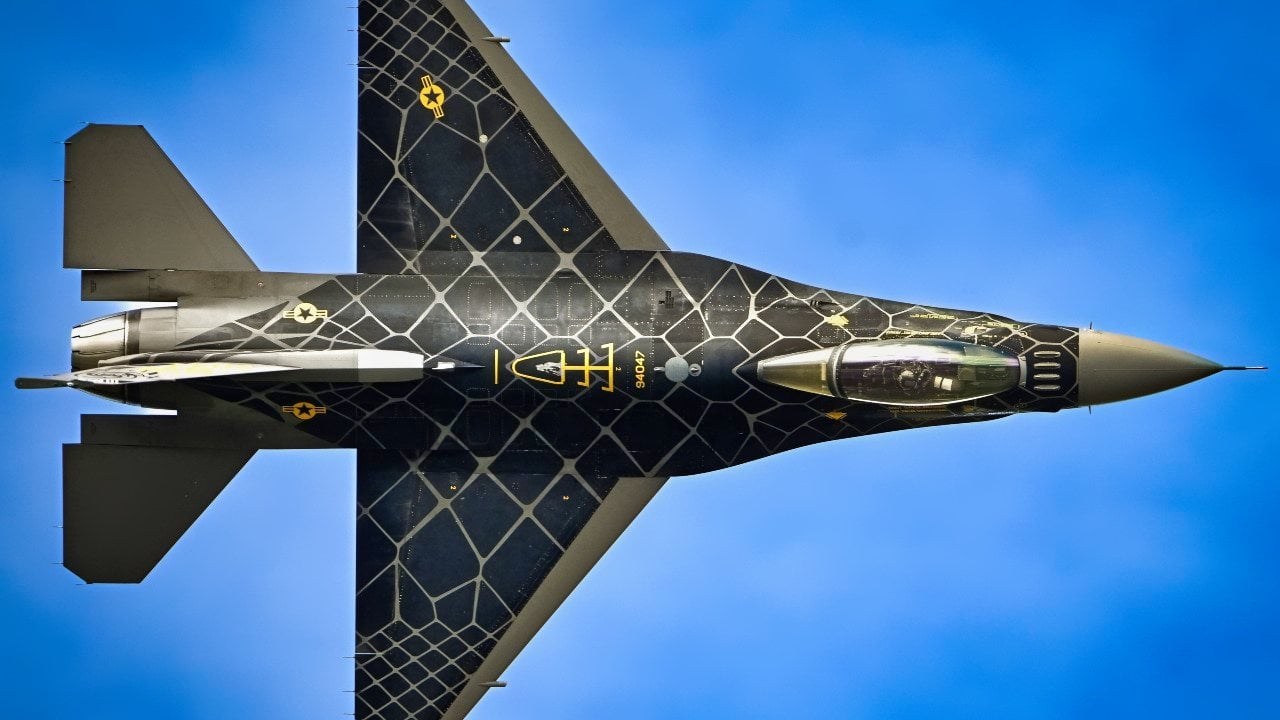
The F-16 Fighting Falcon is making headlines as Belgium, Norway, Denmark, and the Netherlands commit to sending dozens to Ukraine to aid in its defense against Russia. This renewed interest highlights a variant that never was: the F-16 Vought Model 1600.
Designed during the Cold War as a carrier-capable version, the Model 1600 featured enhancements such as Pratt & Whitney F401 engines and AIM-7 Sparrow missiles. However, the prototype’s low-lying intake posed risks on aircraft carriers, leading the Navy to favor the YF-17, which evolved into the F/A-18 Hornet. Despite its promise, the Model 1600 never reached production.
Ukraine to Receive F-16s: A Look Back at the Unbuilt Carrier-Capable Model 16
The F-16 Fighting Falcon has been in the headlines recently for its imminent role in Ukraine. Belgium, Norway, Denmark, and the Netherlands have committed to providing Kyiv with dozens of these fourth-generation jets to aid Ukraine’s defense against Russia.
While the delivery of Fighting Falcons to Ukraine has spurred general interest in the platform’s specs and capabilities, aviation buffs are reminded of an F-16 variant that never came to fruition.
The F-16 Vought Model 1600 was designed as a carrier-capable Fighting Falcon variant during the Cold War. This model never made it to the production line, even though the F-16 platform as a whole remains the most successful, combat-proven multirole airframe ever produced.
Introducing the Fighting Falcon
The F-16 was conceptualized after the Vietnam War to fulfill the U.S. Air Force’s need for an air superiority fighter that could better the USSR’s equivalents.
Ultimately, the General Dynamics F-16 would be selected as the service’s Lightweight Fighter. The F-16 has now served the Air Force diligently for nearly four decades.
The F-16’s superior combat radius keeps the fighter in the air longer than its enemy near-peers. In addition to its top-notch countermeasures and sensors, the aircraft possesses nine hardpoints for weapons payloads. Ordnance is launched from Raytheon LAU-88 launchers and Orgen bomb ejector racks. The F-16 can launch a combination of air-to-air and air-to-surface missiles including the AIM-9 Sidewinder, Raytheon AIM-120 Advanced Medium-Range Air-to-Air Missiles, Maverick, HARM and Shrike missiles.
AfriPrime App link: FREE to download...
https://www.amazon.com/Africircle-AfriPrime/dp/B0D2M3F2JT
What Happened to the Vought Model 1600 Concept?
After the F-16 was chosen as the Air Force’s new Air Combat Fighter in 1975, the Navy was pushed to pursue a similar new jet that might streamline logistics for both services. To fulfill this need, manufacturer General Dynamics collaborated with Vought to create a carrier-capable variant of the F-16.
Three concepts were initially conceptualized, and the Model 1600 version emerged as the primary proposal. This airframe prototype was equipped with Pratt & Whitney F401 engines and armed with AIM-7 Sparrow missiles. The Model 1600 variant was much heftier than the original Fighting Falcon, with larger wings and a broader fuselage.

The YF-17 Beat the Model 1600 Variant
Despite the Vought Model 1600’s promising capabilities, its shortcomings were too many. As others have previously reported, the carrier-capable F-16 prototype’s low-lying intake was too large a risk for the flight deck on an aircraft carrier. In the end, the Northrop Grumman and McDonnell Douglas YF-17 prototype would beat the Model 1600 as the Navy’s preferred new jet platform. The YF-17 would later become known as the F/A-18 Hornet, a series that continues to fly for the Navy today.
AfriPrime App link: FREE to download...


